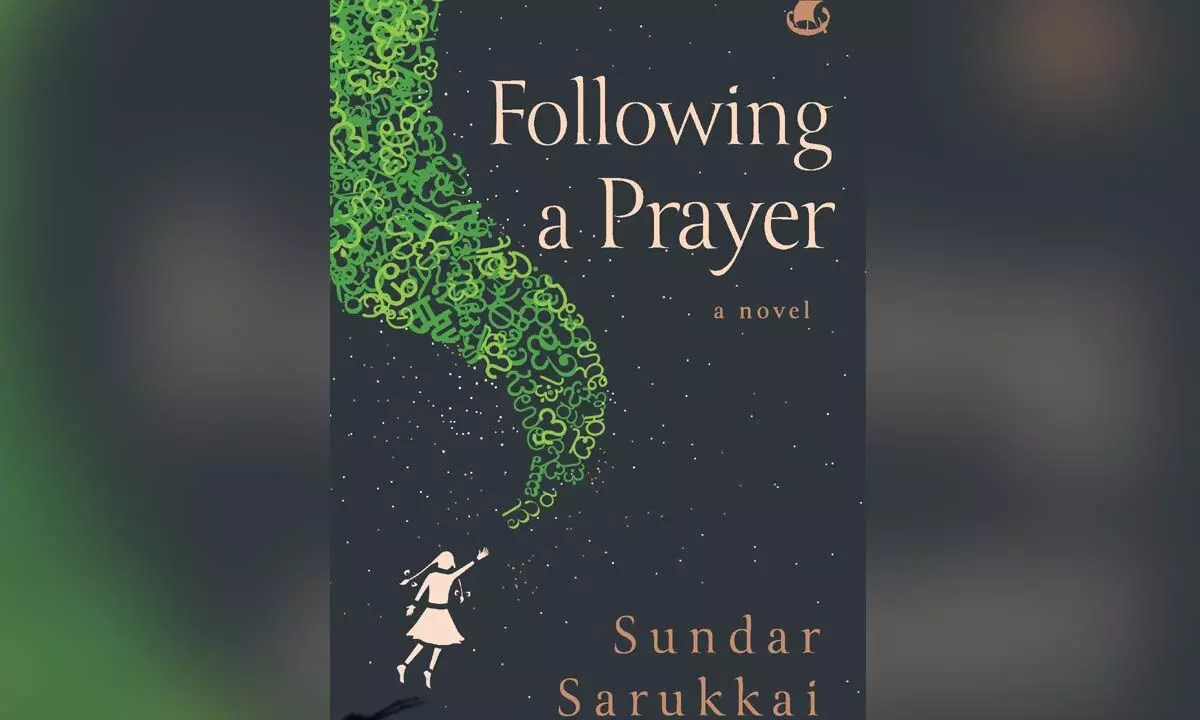Live
- All you need to know about PAN 2.0
- Akasa Air redefines travel experience with industry-first offerings
- MP: Residents stage protests against liquor shop in Indore
- Telugu Actor Shri Tej Booked for Alleged Cheating and False Promise of Marriage in Live-in Relationship
- Toyota Kirloskar Motor Celebrates 1 Lakh Urban Cruiser Hyryder on Indian Road
- MLS: New York City FC part ways with head coach Nick Cushing
- Delhi CM says Centre cutting AAP voters’ names from rolls, BJP hits back
- Hyderabad Metro Rail Phase-II Works to Begin in Old City in January 2025
- Odisha: 668 persons killed in human-elephant conflicts in last three years
- DEFENDER JOURNEYS: TO EMBARK ON ITS THIRD EDITION FROM NOVEMBER 2024
Just In
Following A Prayer by Sundar Sarukkai


Following A Prayer by Sundar Sarukkai
On the following Sunday, the three girls built the temple of the brain.
On the following Sunday, the three girls built the temple of the brain. They went to an open area near their house. It was close to the main road going through the village—an open patch of land with a tree, and grass around it. Sometimes, the cows in the village would graze there. Kalpana and Deeksha left their house late that morning when they heard Kumari calling out to them from outside. They walked up to the tree under which they had decided to build the shrine for their brain god. Deeksha had said, ‘We don’t have money to construct a building for the temple. Let us use the tree as the building.’
They picked up a few flat stones. They built a small shrine by placing some of the stones on the ground and some on top, for the roof. Larger bits of stone functioned as the walls of the shrine. It now looked like a tiny doll’s room, with one side open.
Kumari and Deeksha had discussed the kind of idol they wanted. They had seen drawings of the brain in some science posters pasted on the school walls. These posters had been sent by an NGO from Bengaluru, and they consisted of colourful images of the solar system and the organs of the body, maps of India, and a set of pictures of famous Indian freedom fighters. Deeksha and Kumari had passed by the poster on the organs of the body innumerable times but had not once stopped to look at it carefully. After they decided to build their temple, they stood in front of the poster and stared at it every time they passed by.
The brain looked funny. It had an odd shape—almost like a head. Or like a piece of clay on which there were many crooked roads. They had thought the brain was hard, like their head, but the poster described it as greyish in colour and soft to the touch.
The softness of the brain was a problem for their temple. Gods were made of stone, and the idol in their temple would also be a stone. They were worried about the softness until Deeksha said, ‘Ganesha’s tummy must also be soft, no? But, on the idol, it is hard because it is stone.’
Kalpana had little to contribute. Like a true high priest, she had decided to watch over the two as they built the shrine.
Deeksha and Kumari found the solution for the shape of their idol. They traced the drawing of the brain from the poster. Then they decided to stick the drawing on a rock that looked somewhat like a brain. That would be their idol. Kalpana went searching around the tree for a stone of the right shape. She found one, half sunk into the mud. When she pulled it out, hundreds of ants ran out from beneath the stone. She was happy with the stone. If she could have spoken, she would have said, ‘This is a living stone. It is the right model for the brain.’
Despite her attempt to act aloof, Kalpana was very glad to be part of the project. Having the brain as a god was her answer to the problem of prayers. Ganesha might be a god, but he could not be seen by any of them, unlike the brain, which could be seen by all. They knew where the brain was, how big it was, and its colour and weight. Could they say that about their gods? Deeksha and Kumari cleaned the stone, but they also liked the ants scurrying on the stone as if they were all in a great hurry to go from one point to another. They tried to stick the picture of the brain on the rock with a small tube of gum they had brought with them.

© 2024 Hyderabad Media House Limited/The Hans India. All rights reserved. Powered by hocalwire.com






